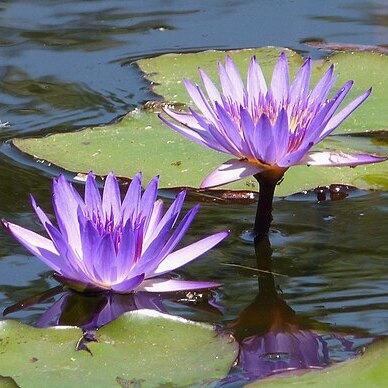Annual or perennial; rhizome globular. Leaf lamina to 40 cm long, 30 cm wide, entire to sinuate; undersurface glabrous. Flowers to 60 cm above water. Sepals 4, to 11.5 cm long, acute to obtuse. Petals to 45, oblanceolate, acute to obtuse, blue to mauve, white or pink. Stamens to c. 300; filaments cylindrical, to 25 mm long, with outer filaments occasionally flattened; anthers yellow, to 13 mm long, often with minute appendage. Carpels 9–23; sterile stigmatic lobes vestigial or obsolete. Fruit c. 5 cm diam. Seeds without longitudinal ridges or proliferations, ovoid to ellipsoid, 1–2 mm long, 0.5–1 mm wide, glabrous, or occasionally with short hairs.

